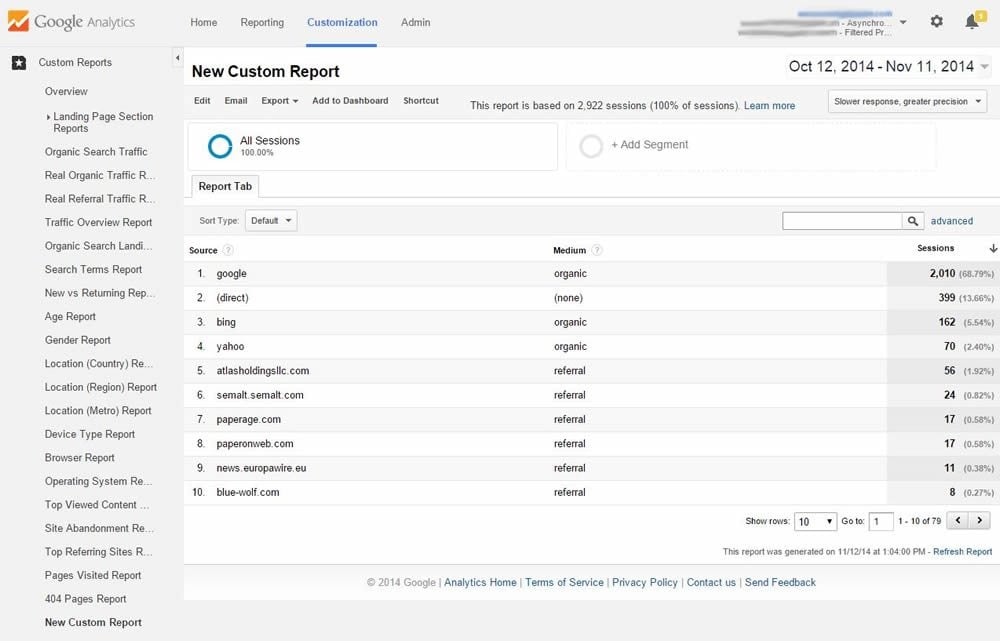Take Full Advantage Of Reporting Accuracy With Additional Dimension in Google Analytics
Recognizing exactly how to optimize reporting precision with second measurements in Google Analytics can substantially boost the deepness of understandings stemmed from data analysis. By incorporating secondary measurements purposefully, online marketers can uncover hidden patterns and correlations that may not be promptly obvious when examining primary metrics alone. This nuanced strategy makes it possible for an extra thorough understanding of user actions and project efficiency, paving the way for more targeted and efficient decision-making. The utilization of second measurements holds the key to unlocking a riches of beneficial information that can change the performance of digital advertising techniques.
Recognizing Second Measurements in Google Analytics
To improve information evaluation and gain deeper understandings into individual actions, recognizing secondary measurements in Google Analytics is critical. Secondary measurements permit customers to sector and additionally dissect data past the key dimension picked. By integrating secondary measurements, analysts can improve their records to expose even more detailed info regarding user interactions on a website. For instance, while the main dimension may show the total variety of web page views, including a secondary dimension such as 'source/medium' can offer insights right into where the web traffic originated from. This added layer of details enables marketers to assess the effectiveness of various advertising and marketing campaigns or channels in driving web traffic to the internet site.
Moreover, understanding secondary measurements is crucial for developing more customized records customized to certain service objectives. By selecting the appropriate combination of secondary and key dimensions, experts can uncover patterns, fads, and connections that could otherwise remain concealed. This nuanced approach to information analysis empowers organizations to make informed choices based upon an extensive understanding of user habits across various measurements.

How to Use Additional Dimensions
When leveraging second dimensions in Google Analytics, the functional application entails choosing details information parameters to more fine-tune understandings beyond the main dimension's range. To use additional measurements efficiently, start by accessing the report or dataset where you wish to dig much deeper right into the data. Within Google Analytics, locate the primary measurement that you are currently assessing. Once recognized, click the dropdown menu labeled "Secondary Dimension." This activity will expose a listing of added criteria that can be included in your evaluation. Pick the secondary dimension that aligns with your analytical goals, such as 'Source/Medium,' 'Gadget Classification,' or 'Area.' By picking a secondary measurement, you can gain much more in-depth understandings right into user habits, demographics, or acquisition channels. Bear in mind that secondary dimensions assist provide context and granularity to your key dimension information, enabling you to remove even more actionable and significant understandings from your Google Analytics reports.
Leveraging Second Dimensions for Insights
Using second dimensions in Google Analytics permits a much more extensive analysis of data, offering valuable understandings beyond the primary measurement's extent. By leveraging additional measurements, customers can dig deeper right into the performance metrics of their website or application, discovering hidden patterns and trends that might not be instantly noticeable when only taking a look at primary measurements.
One secret advantage of utilizing second dimensions is the ability to section and filter information more exactly. This can aid online marketers and experts much better recognize the actions of details individual sections, such as new visitors versus returning visitors, or website traffic coming from various geographical places.
Moreover, second measurements allow users to contrast and comparison numerous information factors within the very same record, offering a much more alternative view of performance (Secondary Dimension in Google Analytics). Combining the main dimension of landing pages with second dimensions like gadgets or demographics can disclose which pages are most effective in engaging users on various gadgets or from different demographic groups.
Basically, leveraging secondary dimensions in Google Analytics equips individuals to draw out richer insights from their information, leading to even more informed decision-making and inevitably, boosted efficiency.
Best Practices for Additional Dimensions
When analyzing information in Google Analytics, incorporating second measurements properly boosts the deepness of insights derived from the primary metrics. Choosing relevant secondary measurements assists in supplying context and a more clear understanding of the information being analyzed.
Additionally, it is recommended to limit the number of second measurements made use of in a solitary record to prevent overwhelming click to investigate the evaluation with as well much info. Concentrating on a few vital additional measurements each time can result in more focused and workable understandings. Furthermore, take into consideration try out various combinations of additional and primary dimensions to reveal special trends and patterns that may not be apparent when looking at the information in seclusion.
Advanced Analysis Strategies With Secondary Dimensions
Exploring detailed information connections with the strategic application of second measurements can unveil nuanced understandings that boost the deepness of analysis in Google Analytics. By combining second dimensions with key information collections, innovative analysis techniques can be utilized to extract valuable info.
Additionally, second dimensions this page can enhance the evaluation of conversion paths by giving extra context. Recognizing the different touchpoints an individual interacts with before transforming can be critical in optimizing the consumer trip - Secondary Dimension in Google Analytics. By making use of additional dimensions to look into specifics such as website traffic resources or gadgets used, online marketers can tailor strategies to target high-converting channels properly
Verdict

To improve data analysis and gain deeper insights right into individual behavior, comprehending second dimensions in Google Analytics is necessary - Secondary Dimension in Google Analytics. Secondary measurements permit users to segment and further study data beyond the primary dimension picked. While the primary measurement may show the complete number of web page views, adding a secondary measurement such as 'source/medium' can give insights into where the web traffic stemmed from.When leveraging useful site secondary dimensions in Google Analytics, the functional application entails picking specific data parameters to additional fine-tune understandings past the key dimension's range. Bear in mind that secondary measurements assist give context and granularity to your main measurement data, enabling you to remove more workable and purposeful insights from your Google Analytics reports